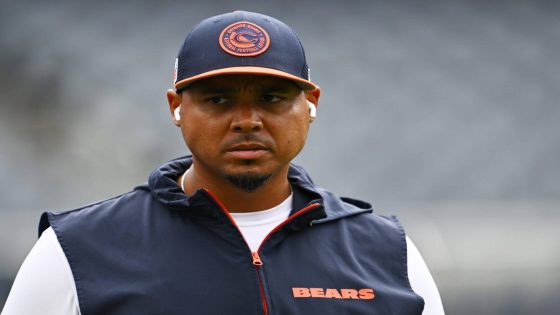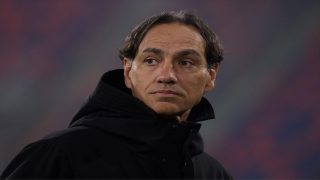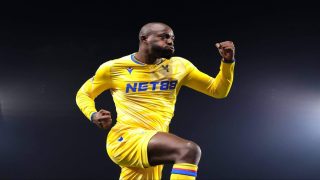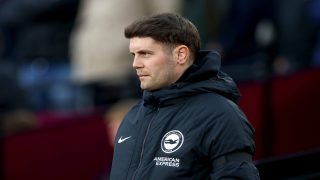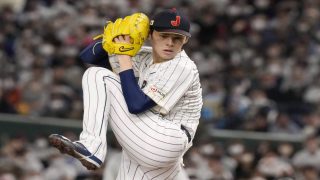When the Chicago Bears lined up to stop the Washington Commanders’ Hail Mary on Sunday, they did so without defensive end Montez Sweat. By that time, he was already ruled out.
It’s safe to say the Bears’ chances would have improved in that moment with Sweat, regardless of what cornerback Tyrique Stevenson was or wasn’t doing.
“He’s one of those guys that you have to account for offensively,” Bears defensive coordinator Eric Washington said. “I think I mentioned several weeks ago about some alignment versatility that we have, alignment variations that we can use not only to get him in different spots but to force matchups that may be favorable for us.”
Sweat didn’t practice Wednesday and was limited Thursday because of his shin injury. Halloween, though, marked the first anniversary of the Bears’ trade for him. Sweat is an exceptional player in a prime position. He was missed in the biggest of moments against the Commanders, his former team.
With the NFL’s trade deadline looming on Tuesday, here are five questions to consider as the Bears mull their options.
1. Should the Bears trade one of their two second-round picks in the 2025 NFL Draft for immediate help this season?
One of the second-round picks is from the Carolina Panthers: the final piece of the blockbuster deal for the No. 1 pick in 2023.
If the draft started today, the Bears would have the first pick of the second round. The Panthers are 1-7 and are by the far the worst team in the league.
It’s a unique position for general manager Ryan Poles. It’s a powerful one. He didn’t hesitate to trade a second-rounder for Sweat last year.
The real question for Poles, though, is whether the Bears are better off retaining both picks and using them in the draft. That will take some projection. The best-run teams typically have a mix of starters on large contracts and rookie deals.
When the Bears traded for Sweat, they immediately signed him to a four-year, $98 million contract. The Bears have a handful of big contracts on their books for 2025: Sweat, cornerback Jaylon Johnson, receiver DJ Moore, linebacker Tremaine Edmunds and tight end Cole Kmet. The Bears need more young starters on rookie contracts.
2. Do the Bears have to retain right guard Nate Davis because of all the injuries on the offensive line?
In the short term, yes.
In the long term, no.
The offensive line is in flux for this week’s game against the Arizona Cardinals. Left tackle Braxton Jones (knee) and rookie tackle Kiran Amegadjie (calf) missed practice on Thursday, but neither has a season-ending injury. Larry Borom (ankle) appears in line to start, once he’s activated off injured reserve.
The Bears did lose reserve guard Bill Murray (pectoral) for the season, but center/guard Ryan Bates (shoulder) is closer to returning. Bates was limited for the second day in a row after the Bears opened his 21-day practice window.
Left guard Teven Jenkins (knee) survived his two injury scares against the Commanders, but he was limited on Wednesday and didn’t practice on Thursday.
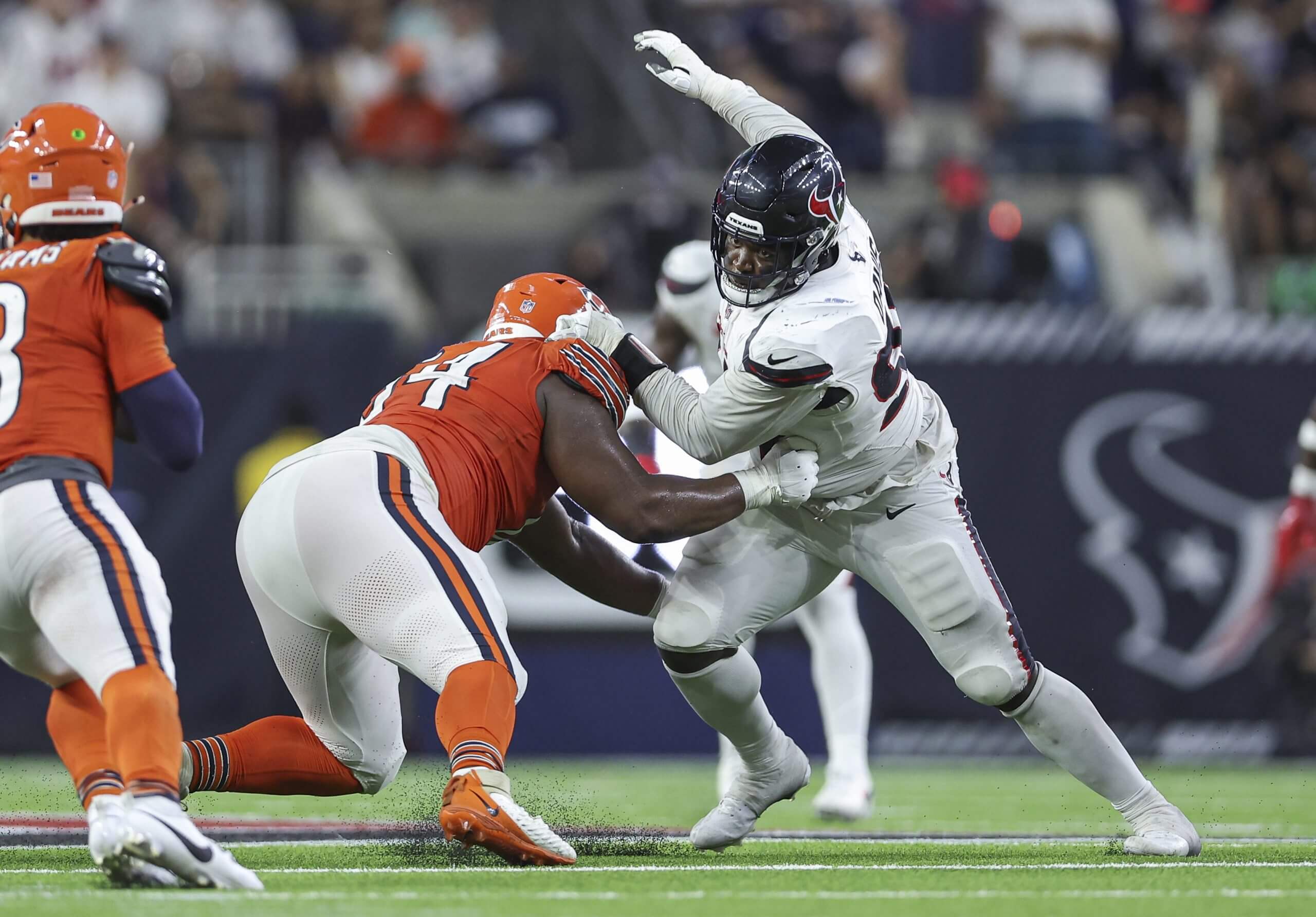
With Matt Pryor starting at right guard, the depth could essentially remain the same with Bates replacing Murray as the top interior reserve. Backup center Doug Kramer also played guard against the Commanders when Jenkins was hurt.
So what does this mean for Davis?
He might be needed this week if Jenkins’ knee is problematic or Bates still requires time. But the Bears should still entertain suitors. Trading Davis might require taking on some of his remaining salary, but the Bears also moved on when they made him inactive weeks ago. If the Bears can get some draft capital for him, they should do it.
3. What if the best players available on the trade market are defensive players?
The Bears have a top-five defense because they’ve invested in it.
They traded for Sweat last year and defensive end Darrell Taylor this year. They signed Edmunds, linebacker T.J. Edwards, defensive end DeMarcus Walker and nose tackle Andrew Billings (plus, an extension) in free agency. Johnson received his long-term extension in March. And the team drafted nickelback Kyler Gordon, safety Jaquan Brisker, cornerback Tyrique Stevenson and three-technique defensive tackle Gervon Dexter Sr. in the second round.
Poles will never ignore opportunities to improve his defense. But with rookie quarterback Caleb Williams now in place, it wouldn’t be surprising if the Bears’ resources started to tilt in favor of the offense.
4. Should the Bears do the right thing and trade running back Khalil Herbert?
Yes, they should. Not only would the Bears be doing right by Herbert, but also they’d gain something tangible in the form of draft capital.
Herbert only has eight carries in seven games this season. He’s the Bears’ No. 3 back but could be in a rotation — or potentially the starter — for another team that needs help in the backfield.
Khalil Herbert gets the @ChicagoBears on the board!
📺: #CHIvsHOU on NBC/Peacock
📱: Stream on #NFLPlus pic.twitter.com/p7n9uXrGYy— NFL (@NFL) September 16, 2024
An argument can be made for keeping Herbert because of injury concerns, but the return of Travis Homer should alleviate them. Homer replaced Herbert as the Bears’ second kickoff returner with DeAndre Carter against the Commanders.
Herbert, a sixth-round pick in 2021, is in the final year of his rookie contract. It’s best to move on now if a trade can be made, instead of seeing him leave in free agency and relying on the compensatory pick formula.
Under Poles, the Bears have invested plenty at running back: signing D’Andre Swift to a three-year, $24 million deal this past offseason and drafting Roschon Johnson in the fourth round last year.
5. Where does this year’s trade deadline fit into Phase 3 of Ryan Poles’ master plan for the Bears?
Before the season, Poles described the Bears as being in the “second phase of things” as a team. With Williams drafted and a burgeoning defense, more wins were expected this season, but patience still was preached.
The Bears may not be one of the best teams in the league, but they do have a winning record at 4-3 with plenty of areas to improve and a rookie quarterback still learning as he plays.
So what does Phase 3 look like? Is it too early to discuss it?
When you’re Poles, the long term is considered as much as the Bears’ next game. If Poles sees an opportunity at the deadline to improve the team in 2025, 2026 or beyond — especially when it comes to helping Williams — then he should act.
It’s just unclear if those opportunities exist. Last year, Poles seized on one. It’s why Sweat is signed through the 2027 season.
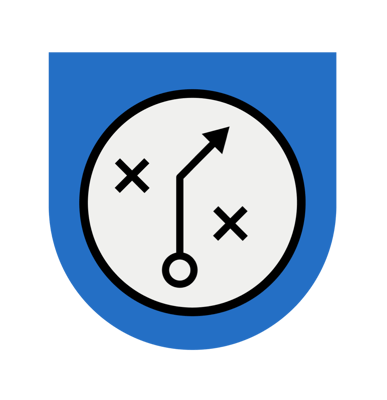
Free, daily NFL updates direct to your inbox.
Free, daily NFL updates direct to your inbox.
Sign Up
(Top photo of Ryan Poles: Quinn Harris / Getty Images)
